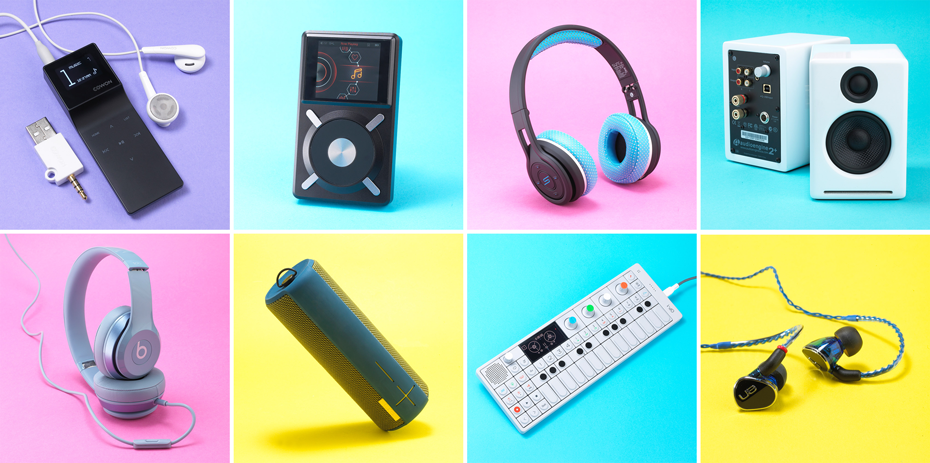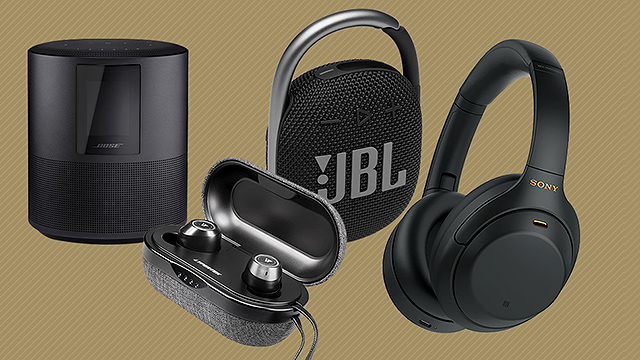Audio Devices: The Essential Guide to Choosing the Right Sound for You

In today’s world, audio devices are essential tools that help enhance our listening experience. Whether you’re listening to music, watching movies, gaming, or engaging in virtual meetings, the right audio equipment can make all the difference. But with so many types of audio devices on the market, it can be overwhelming to know which one suits your needs the best.
In this comprehensive guide, we will explore the different types of audio devices available, how to choose the right one for your specific requirements, and the latest trends in audio technology. Whether you are a casual listener or an audiophile, we’ve got you covered.
Understanding Audio Devices
Audio devices refer to any piece of equipment designed to capture, process, or output sound. They can range from simple earphones to advanced studio monitors, depending on the application.
Types of Audio Devices
Audio devices are categorized based on their functionality and design. Here are the main types:
- Speakers: Devices that convert audio signals into sound that can be heard.
- Headphones: Personal audio devices worn on the head or over the ears, designed for private listening.
- Earbuds: Small, portable audio devices that fit inside the ear, often used with smartphones and portable media players.
- Microphones: Devices that capture sound and convert it into an electrical signal, commonly used for recording or communicating.
- Soundbars: External speakers designed to enhance the sound quality of your TV or home theater system.
- Headsets: A combination of headphones and a microphone, typically used for gaming or virtual meetings.
- Amplifiers: Devices used to increase the audio signal strength, commonly used in high-end audio systems.
Choosing the Right Audio Device
When selecting an audio device, it’s crucial to consider several factors based on your intended use. Below, we’ll explore the key features you should prioritize when making your decision.
Factors to Consider When Choosing Audio Devices
1. Purpose
Your choice of audio device largely depends on its primary purpose. Are you looking for something to enjoy music, improve gaming experiences, or enhance your TV setup? The answer will guide you toward the right type of device.
- Music: If you’re an audiophile, look for high-fidelity speakers or studio-quality headphones.
- Gaming: For gaming, a gaming headset with noise-canceling microphones and surround sound is ideal.
- TV & Home Theater: Consider a soundbar or home theater system for a more immersive viewing experience.
2. Sound Quality
Sound quality is the number one priority for most audio enthusiasts. Look for devices that offer clear highs, deep lows, and balanced mid-range frequencies. Some advanced audio devices feature Dolby Atmos or DTS:X technology for a more immersive surround sound experience.
- Speakers: Choose bookshelf speakers for compact sound or floor-standing speakers for more powerful output.
- Headphones: Look for open-back headphones for a natural sound or closed-back headphones for noise isolation.
3. Connectivity
Connectivity is another important factor, especially if you want to use your audio device with multiple gadgets. Consider whether you need wired or wireless options:
- Wired: Generally offers better sound quality, especially for headphones and speakers.
- Wireless: Bluetooth-enabled devices allow you to connect easily with smartphones, tablets, and laptops.

4. Design and Comfort
Comfort is especially important for audio devices you wear, such as headphones and headsets. Look for devices with adjustable headbands, soft ear cushions, and lightweight designs. For speakers, consider the overall aesthetics of the device and how it fits into your home or office setup.
5. Budget
Audio devices come in a wide price range. While you don’t need to break the bank to get good sound quality, investing in high-end audio equipment can provide a richer, more refined listening experience. That said, you can still find affordable audio devices that deliver good performance for everyday use.
Popular Audio Devices for Different Needs
1. Best Headphones for Audiophiles
If you’re an audiophile, sound quality is paramount. Here are some top-rated headphones known for their exceptional sound quality:
- Sennheiser HD800S: Known for its open-back design and wide soundstage, this model is perfect for those who want a natural listening experience.
- Sony WH-1000XM5: These wireless headphones offer industry-leading noise cancellation and excellent sound quality, making them ideal for both travel and home use.
2. Best Gaming Headsets
For gamers, immersive sound and communication are essential. Look for headsets that offer virtual surround sound and a high-quality microphone:
- SteelSeries Arctis Pro Wireless: Offers lossless wireless audio and a clear microphone, perfect for both competitive gaming and casual streaming.
- Razer BlackShark V2: This headset is designed with 3D audio and noise cancellation features, enhancing the gaming experience.
3. Best Speakers for Home Theater
A good sound system can transform your living room into a home theater. Look for 5.1 surround sound systems or soundbars for a cinematic experience:
- Sonos Arc: This soundbar offers Dolby Atmos support and delivers rich, detailed sound for movies and music.
- Klipsch Reference Theater Pack: For a full surround sound system, this setup includes wall-mountable speakers and a subwoofer for deep bass.
4. Best Microphones for Streaming and Recording
For those who want to record professional-quality audio, a great microphone is essential:
- Shure SM7B: Known for its warm sound and versatility, the SM7B is a top choice for podcasters, streamers, and recording artists.
- Blue Yeti X: This USB microphone is user-friendly and provides excellent sound quality for recording, streaming, and content creation.
Trends in Audio Devices
The audio industry is rapidly evolving, with new technologies and features emerging to enhance your experience. Here are some notable trends in audio devices:
1. Wireless Audio
Wireless audio devices, particularly Bluetooth-enabled headphones and speakers, have become increasingly popular due to their convenience and portability. True wireless earbuds, like the Apple AirPods Pro, are now common, offering seamless integration with smartphones.
2. Noise Cancellation
Noise-canceling technology has come a long way. Modern headphones, like the Sony WH-1000XM5, feature adaptive noise cancellation that adjusts the level of noise cancellation based on your environment, providing an immersive listening experience without distractions.
3. Smart Audio Devices
With the rise of smart home technology, many audio devices now come with voice assistants like Alexa, Google Assistant, or Siri integrated. These devices allow you to control your audio system using voice commands, making them more convenient to use.
FAQs About Audio Devices
Q1: What’s the difference between open-back and closed-back headphones?
- Open-back headphones allow air and sound to pass through the ear cups, providing a more natural and open sound. However, they don’t isolate noise as well.
- Closed-back headphones have a sealed design, which provides better sound isolation and minimizes sound leakage.
Q2: Do I need a dedicated audio amplifier?
An audio amplifier is necessary for high-end speakers or headphones that require more power to perform at their best. If you’re using high-impedance headphones or speakers, an amplifier can significantly improve sound quality.
Q3: Can I use my headphones for both gaming and music?
Yes, many gaming headsets offer excellent sound quality for both gaming and music. Look for headsets with a flat sound profile to ensure they perform well for both activities.
Q4: How do I connect wireless speakers to my TV?
To connect wireless speakers to your TV, you typically use Bluetooth or Wi-Fi. Some smart TVs have built-in support for wireless speakers, while others may require a Bluetooth transmitter or a Wi-Fi-enabled audio device for pairing.
Conclusion
Whether you are building a home theater, recording your next podcast, or simply enjoying your favorite music, the right audio devices are key to achieving an optimal experience. With numerous options available, it’s essential to choose devices that suit your needs, whether you prioritize sound quality, comfort, portability, or budget.
Remember to consider factors such as sound quality, connectivity, comfort, and purpose when making your choice. With the right audio equipment, you can enjoy immersive soundscapes that transform your entertainment experience.
For more information about different types of audio devices and how to choose the right one for you, check out these helpful resources:
- Best Headphones for Audiophiles
- [Top Gaming Headsets for 2024](
https://www.voip-sip-sdk.com)

